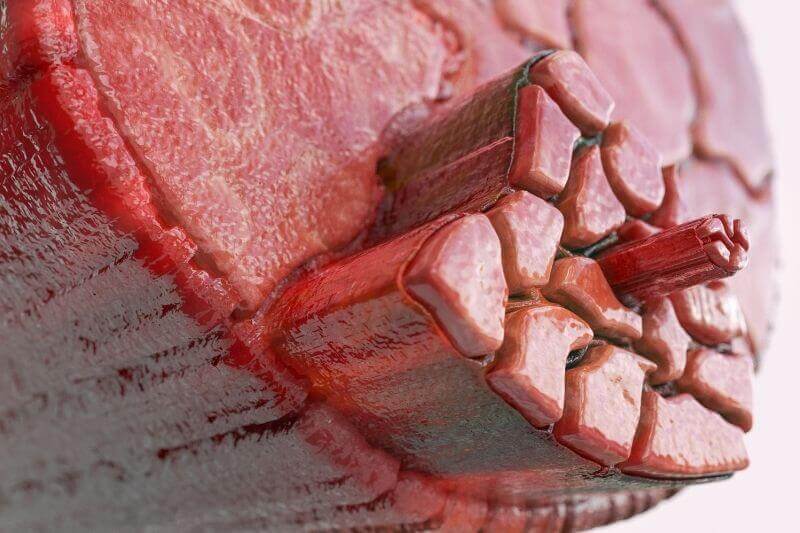The following lean body mass (LBM) calculator will provide you with an estimate of your lean muscle tissue and your fat mass based on your gender, height, and weight.
It’s important to understand that your actual amount of muscle and fat may vary due to a variety of factors (i.e., exercise volume, dietary habits, physical health status, hormones, etc) and that prediction equations in general come with a small margin of error.
After using the calculator, please read the article below for a more thorough understanding of your lean body mass.
Other health calculators on this site
- Protein calculator for weight loss and building muscle
- Iron intake calculator for meat
- Macronutrient percentage calculator
- Total daily energy expenditure calculator
- Basal metabolic rate calculator
- Body mass index calculator
Lean body mass calculator
Lean body mass formulas
The calculator uses three different formulas (or equations) which are listed below:
Boer formula (1984) Am J Physiol 247: F632-5
Male: Lean Body Mass (kg) = (0.407 * Weight[kg]) + (0.267 * height[cm]) – 19.2
Female: Lean Body Mass (kg) = (0.252 * Weight[kg]) + (0.473 * height[cm]) – 48.3
Hume formula (1966) J Clin Pathol 19(4):389-91
Male: Lean Body Mass (kg) = (0.32810 * Weight[kg]) + (0.33929 * height[cm]) – 29.5336
Female: Lean Body Mass (kg) = (0.29569 * Weight[kg]) + (0.41813 * height[cm]) – 43.2933
James formula (1976) Research on obesity: A report of the DHSS/MRC group. Department of Health and Social Security/Medical Research Council, 1976, London, HMSO
Male: Lean Body Mass (kg) = (1.1 * Weight[kg]) – 128 * (Weight[kg] / height[cm])2
Female: Lean Body Mass (kg) = (1.07 * Weight[kg]) – 148 * (Weight[kg] / height[cm])2
What is lean body mass?
On a very simple level, your lean body mass is simply everything in your body that is not fat mass (i.e., skeletal muscle, organs, ligaments, tendons, bones).
Your fat mass includes your white fat (i.e., stored fat under your skin and around your organs), brown fat (i.e., heat generation), beige fat (i.e., a mix of the two), and essential fat (in your brain, nerves, and membranes).
Gender and lean body mass
In general, because women tend to hold more body fat for child-bearing purposes, they would have a relatively lower proportion of lean body mass.
And due to differences in hormone levels between genders, men tend to carry more lean body mass than women (i.e., higher testosterone levels).
However, it’s important to note the difference between absolute and relative muscle and fat content and why it’s still important to look at each person individually.
For example, you could have a tall female power athlete and a comparatively shorter male athlete with the following anthropometric data:
| Units | Female | Male |
| Height | 6’2″ (188cm) | 5’8″ (173cm) |
| Weight | 187 lbs (85 kg) | 158 lbs (72 kg) |
| BMI | 24 kg/m2 | 24 kg/m2 |
| Fat% | 18% | 18% |
| Fat weight | 33.7 lbs (15.3 kg) | 28.4 lbs (12.9 kg) |
| Muscle % | 82% | 82% |
| Muscle weight | 153.3 lbs (69.7 kg) | 129.6 lbs (58.9 kg) |
At a glance, you can see that despite large differences in height and weight, they both have the same body mass index (24 kg/m2) and relative muscle and body fat percentages (82 and 18%, respectively).
But when you calculate the absolute amount of muscle and fat weight, you can see things look very different.
The female athlete has 33.7 lbs (15.3 kg) of fat weight and 153.3 lbs (69.7 kg) of muscle weight, whereas the male athlete has 28.4 lbs (12.9 kg) of fat weight and 129.6 lbs (58.9 kg) of muscle weight.
The overarching lesson here is that gender is not all-deterministic. While the relative numbers might appear one way, you must also consider the absolute numbers too. You always have to look at the individual and consider other factors such as their physical size (height, weight), the type of exercise, and training volumes.
How much lean mass should I have?
On average, lean mass for women hovers around 70 to 75% and around 75 to 85% for men.
As mentioned above, lean mass will vary up or down depending on the individual’s age, hormone status, exercise volume and intensity, injury and immobilisation, or other medical issues that may have affect lean tissue.
Lean body mass and aging
We tend to lose muscle tissue with age. In a review article by Volpi et al on muscle tissue changes with aging, muscle mass decreases approximately 3–8% per decade after the age of 30 and this rate of decline is even higher after the age of 60.
As we age, there is also a tendency towards inactivity which may further hasten muscle loss and a decrease in metabolic rate – and fat gain due to the ubiquitous availability of high energy refined/processed junk food.
How to measure lean body mass?
The formulas used in this lean mass calculator only provide an estimate of LBM. If you’re interested in measuring your body composition, there are a number of inexpensive options available.
DEXA Scan
DEXA stands for “dual energy x-ray absorptionmetry.” With this method, harmless low-energy x-rays pass through your body and provide a measurement of how much fat, muscle, and bone you have. In recent years, DEXA scans have become more affordable and accessible and can provide a reliable way of tracking and trending your body composition over time.
Bioimpedance analysis
Bioimpedance analysis technology (popular in gyms) entails standing on a metal scale or placing electrodes on two parts of your body and passing an electrical current through your body. The device measures your body’s resistance (or impedance) to the current and makes an estimate of total body water. Then your lean and fat mass is extrapolated from this number.
The limitation is that if you’re dehydrated or over-hydrated, it can skew the results. So it’s important to measure yourself under similar conditions each time.
Air displacement plethysmography
Air displacement plethysmography is a validated method that, as the name implies, uses air displacement to estimate body composition. This is the technology used in the Bod-Pod which is common in clinics and university research.
Skinfold measures (callipers)
Skinfold callipers are used to assess subcutaneous skinfold thickness which is then extrapolated to estimate total body composition (lean mass and fat mass). It is a quick and easy field measure, but the protocol must be strictly administered to ensure reliability (often a problem when callipers are used by untrained or inexperienced technicians).
Other body composition methods
Computed tomography (CT scan) and magnetic resonance imaging (MRI) can be used to assess body composition. However, these are quite powerful (impractical) machines that are mainly reserved for clinical and research settings.
Body composition articles on this site
- How much body fat should I have?
- Fat Mass Index | Because BMI and Body Fat Percent Suck
- 7 Ways Body Fat Is Actually Good For You
- Obesity Genes: Does Your DNA Predict Body Fat and Weight?
- Body Mass Index Calculator
- Permanent Fat Loss Principles: The “Secret” is No Secret
How do I build lean body mass?
If you’re looking to hold onto lean mass, look no further than exercise and diet.
Exercise
Strength training (aka weight training or progressive resistance training) taxes your body in ways that induce muscle growth. By progressively lifting more weight over time, your body continues to get stronger and will exhibit an increase in size. Two to three sessions per week can help build muscle and/or minimise muscle loss.
Resistance exercise types
There are a number of resistance exercise types to build muscle.
- Free weights
- Resistance machines
- Body weight (calisthenics)
- Resistance bands
- Pilates
- Yoga
Does aerobic exercise help?
Aerobic exercise (also referred to as cardiovascular exercise) is lower-level, repetitive, continuous activity you can sustain over time (i.e., running, jogging, cycling, dancing). While it’s not necessarily a form of exercise that builds big muscles, it still plays an important role in achieving and maintaining overall metabolic health (i.e., controlling blood sugar, blood lipids, etc).
Diet
In order to build muscle, you need to eat adequate calories to support your level of training and muscle growth during recovery.
The majority of your calories (~50 to 70%) should come from high quality carbohydrate sources, which is the preferential fuel source for your central nervous system. Then, once your carb needs are met, you should eat adequate amounts of protein (about 12 to 20%) so your muscles can repair themselves after workouts. The remainder of your calories will come from high quality fat (mono- and polyunsaturated fats).
Examples of good quality protein are:
- Chicken
- Fish
- Lean red meats
- Eggs
- Legumes
- Nuts
It’s important to remember that, despite all the supplement websites telling you to eat megadoses of protein (that they just so happen to be selling), your body will only use what it needs and the rest can be excreted or stored as fat.
See article on bullshit health marketing phrases that might fool you.
Other health calculators on this site
- Total Daily Energy Expenditure Calculator
- Basal Metabolic Rate Calculator
- Body Mass Index Calculator
- Macronutrient Percentage Calculator
- Interactive Bullshit Detector for Health Products & Services
Take home message
The lean body mass calculator is a quick and easy way to make an estimate of your lean tissue. It’s important to remember that the operative word is “estimate” and, if you’re looking for a more accurate lean mass measurement, the physical assessment methods listed in this article may provide you with more objective detail.
Feel free to leave a comment or question below.
Share on Pinterest


i think your total percentage for the calculator is incorrect, as the results in green text for “lean mass” vs “fat mass” adds to 130 vs 100(%)… unless i am using the calculator wrong or misinterpreting the numbers. 🙂
I had a look and the math seems to add up. Also note that you have to choose imperial or metric so maybe that’s the issue (?). If there’s an error in the coding, I’m just not seeing it on my end yet. I’ll have another look. Cheers for the heads up.